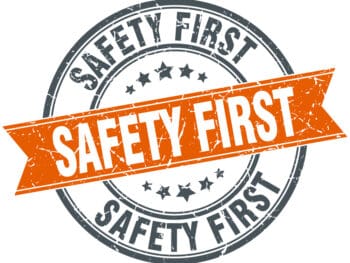
- Commitment to Safety by All Interested Stakeholders: Companies with lower work injury rates are successful because leadership has made a commitment to providing a safe workplace. This commitment includes a message being delivered from upper management, and consistent implementation. Leaders who practice what they preach see buy-in from the workforce.
Click Link to Access Free PDF Download
“4-Step Sequence For Effective Employee Screening, Hiring, & Placement”
- Constant Review of Safety Practices and Procedures: Policies are only as good as the piece of paper they are written on. In some instances, a policy may sound like a good idea but is not practical upon its implementation. All policies should be subject to review on a quarterly basis. Input should also be solicited from the people who are impacted the most – the employee. Allow everyone to be a part of the process.
- Review Workplace Ergonomics: Those interested in reducing workplace injury should have all work activities reviewed for proper ergonomics. This includes a review of activities performed on the production line and front office. While it might take an investment of money, the possibility of a profitable return in terms of lower workplace injuries pays dividends. Simple fixes include having employees limit repetitive motions, installing proper flooring, mating, and lighting. Cross-training also adds value to an employee’s knowledge and value.
- Install Proper First Aid Kits: All employees should have access to proper first aid kits. They should be stocked to fit a variety of common work injuries and monitored to make sure they are replenished in a timely manner. This should be done on a monthly basis when other safety equipment is checked, such as fire extinguishers. Consider adding advanced life-saving equipment such as portal defibrillators in the workplace, and make sure everyone knows how to use and operate them.
- Review Workplace Safety Plan: All workplaces should have a safety plan in place. This includes worksites that are not required to have them. Start the new year off on a positive note to make sure it is updated, and all employees are aware of what to do. This includes incidents such as fires, severe weather, and active workplace intruder situations. All exits and egresses should be secure and properly marked.
- Review Workers’ Compensation Policies and Procedures: All employers should make their employees aware of procedures related to work injuries. This includes basic information such as how to properly report a work injury, why it is important to report incidents in a timely manner, and contact information for the insurance carrier. Managers should also receive instruction on how to report a work injury to the insurance carrier, along with other responsibilities. Additional steps should also be taken to make employees feel comfortable when reporting a work injury. Emphasize a zero-tolerance policy when it comes to harassment, intimidation, and discrimination when an employee reports a work injury.
Additional Steps for Workplace Safety
A safe workplace also includes proper instruction for management. This includes providing managers with information on the following issues:
- Common workplace injuries, and steps to take to prevent them from occurring;
- Communication of safety-related issues at all team meetings; and
- Points of emphasis when it comes to a safe workplace.
Conclusions
A new year is coming, now is the time to re-commit yourself and company to a safe workplace. A commitment to safety starts from the top and trickles down to all employees.

Contact: mstack@reduceyourworkerscomp.com.
Workers’ Comp Roundup Blog: https://blog.reduceyourworkerscomp.com/
©2019 Amaxx LLC. All rights reserved under International Copyright Law.
Do not use this information without independent verification. All state laws vary. You should consult with your insurance broker, attorney, or qualified professional.







